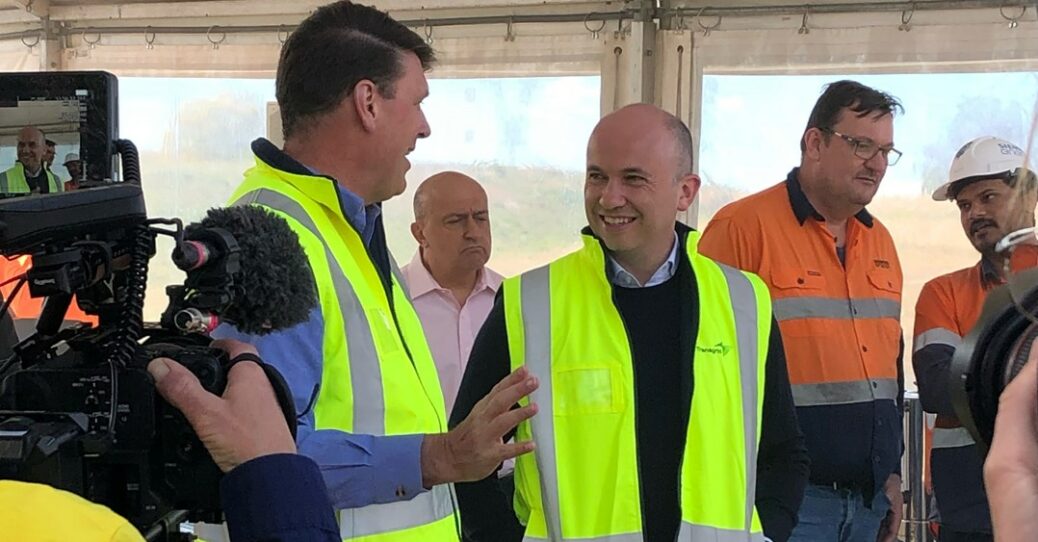The critical upgrade to the Queensland to New South Wales Interconnector (QNI) has been completed, with the $236 million project allowing more energy to transfer reliably between the two states and the ACT as required, as well as helping to reduce energy costs for households.
The project, completed by Transgrid, is part of Australian Energy Market Operator’s Integrated System Plan (ISP) and is set to reduce constraints on the New South Wales transmission network which has suffered with energy shortfalls and rising energy costs.
The upgraded QNI allows 460MW more power to be transferred into Queensland and 190MW more into New South Wales and the Australian Capital Territory when needed.
Transgrid CEO, Brett Redman, said the interconnector upgrade has come in on time and on budget and will now make a significant difference to the National Electricity Market.
“QNI is the first ISP project we have delivered and it is a critical piece of infrastructure to support Australia’s energy transition,” Mr Redman said.
“Transgrid is leaning into the acceleration of the energy transition by building the major projects which will enable the integration of renewables, increase competition among generators, drive down electricity prices and support the decarbonisation of Australia’s economy.
“I’d like to thank the New South Wales and Commonwealth Governments for their support in delivering this crucial project, which will form part of the backbone of the future energy system.”
The QNI upgrade involved a range of works including:
- Upgrading 300km of transmission lines
- Replacing 58 towers between Tamworth, Muswellbrook and Liddell power station
- Upgrading substations at Armidale, Dumaresq, Muswellbrook and Tamworth
- As part of construction new taller pole structures were put in place to enable the transmission of more energy as new generation comes online
Technology was also installed at multiple substations to strengthen the transmission network including new capacitor banks, Static Volt Amp Reactive compensators (SVC), transformers and 330kV switch bays. The capacitor banks provide additional reactive power, while the SVC regulates the reactive power on the grid to keep it stable.
Approximately 150 jobs were created during the project and Transgrid provided community grants to support the work of local not-for-profit groups along the project route.
The Commonwealth and New South Wales Governments supported the early delivery of QNI through a $102 million joint-underwriting of the project.
New South Wales Treasurer and Minister for Energy, Matt Kean, welcomed the completion of the project.
“We identified the QNI project as a priority in the New South Wales Transmission Infrastructure Strategy because it supports our vision to provide affordable and reliable energy for New South Wales households,” Mr Kean said.
“QNI will support the development of Renewable Energy Zones which will be vital to ensuring the future of electricity in New South Wales as coal fired power stations retire.
“New South Wales is leading Australia’s action on climate change and this project is an important step in shifting to cleaner, greener energy and helping us to secure our economic prosperity for decades to come.”
Mr Kean said the QNI is part of the New South Wales Government’s plan to modernise the infrastructure needed to support the energy transition and cater for forecast increases in energy demand.
“This vital infrastructure will boost interstate transmission capacity by over 190MW from Queensland to New South Wales, and 460MW from New South Wales to Queensland, making it easier to share lower-cost generation between the two states,” Mr Kean said.
“The interconnector upgrades will also support the development of renewable generation in new energy zones across both states, as coal-fired generators retire and we transition towards a grid predominantly supplied by renewable energy sources,” Mr Kean said.
Mr Kean said the priority project is expected to provide net benefits of $170 million to electricity customers and producers.
“It will help to reduce electricity bills for households and provide a more reliable and affordable energy supply for the people who live, work and play in New South Wales.”
QNI and another soon to be completed ISP project, the Victoria New South Wales Interconnector (VNI), will support the development of new renewable generation in the state’s energy zones.
These projects are approaching completion as Transgrid builds the 700km New South Wales section of EnergyConnect, from Wagga Wagga to the South Australian border. Electranet is constructing the South Australian section of the new interconnector from the border to Robertstown. EnergyConnect will enable the sharing of energy between New South Wales, South Australia and Victoria and support the integration of renewable energy in southern renewable energy zones.
Transgrid is also developing two other actionable ISP projects; HumeLink and VNI West Kerang, which together with EnergyConnect will reinforce the southern grid and support cheaper, cleaner energy and the decarbonisation of the nation’s economy.
Featured image: L-R, Transgrid CEO, Brett Redman, and New South Wales Treasurer and Minister for Energy, Matt Kean. Image courtesy of Transgrid.
















